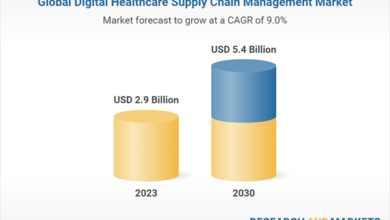14 Product Management Tools Every PM Should Know

Product managers are always trying to get as close to the customer as possible. But customers are busy, which means collecting meaningful data on their habits and preferences can be tricky. And with growing demands on product managers’ time, both real-time and asynchronous collaboration and workflow tools are likely to become ever more important as a way to keep projects on track and meet rapidly shifting market demands.
Top Product Management Tools
- Microsoft Power BI
- Jira
- Miro
- monday.com
- Hotjar
- Slack
- Amplitude
- Mural
- Confluence
- UXPin
Clear and intentional communication is key, both internally within the product team, and, even more importantly, with engineering and design teams and other stakeholders at your company. We talked to five product managers and a brand manager with product responsibilities to learn what product management tools are helping them thrive.
Product Management Tools to Know
1. Microsoft Power BI
Used to inform executive-level business decisions, Microsoft’s Power BI is a data visualization and analytics tool that allows for complex queries across customer databases. Todd Boes, chief product officer at customer training platform company Thought Industries, said the platform presents information from multiple data sources, such as Salesforce, SAP Business Warehouse Server, Azure, Google Analytics and QuickBooks, in columns and tables that can be quickly compared across key performance indicators, such as monthly active users, the weekly time a visitor spends on a site, and pass-through rates.
“[Product managers] typically have a set number of KPIs, but those KPIs change a lot. So they may come out of a meeting with their executives who want to look at the data in a different way,” Boes told Built In. “The nice thing about Power BI is you can go back to the tool and say, ‘Oh, let me slice it this way and build a new chart and share it with executives so they can track this on a daily basis.’”
Speed and agility in data analysis can be especially important for software-as-a-service (SaaS) subscription companies, who live or die by customer retention. “As a product manager, you want to be alerted if there’s a drop in customer usage of your product,” Boes said. “If so, you want to reach out to the customer and try to understand why.”
- Key features: Pulls data from sources like Salesforce and QuickBooks; handles complex data queries; produces data visuals quickly with AI tools.
- Pricing: A free plan is available, with other plans being $10 per month per user and $20 per month per user.
- Rating: 4.5/5 on Capterra; 4.5/5 on G2.
2. Jira
Developed by the Sydney-based software company Atlassian, Jira is an agile product development tool for tracking projects and flagging software bugs. Aviad Pinkovezky, chief product officer at Hippo Insurance, said it allows product managers to issue collaborative workflow tickets that provide directives and guidance to teams.
“It’s essentially a very effective tool to create prioritization, assign tasks and answer questions that are not the kind of questions that need to be addressed via Slack,” said Pinkovezky. “Everything that has a material impact over the scope of the deliverable should be documented on the Jira ticket.”
Tickets can be transferred quickly among roles within an omnidirectional organization as a project evolves, but they tend to establish a linear task progression. “So it allows you to monitor the workflow and to create a workflow that meets the team requirements,” Pinkovezky said.
The living document also helps quality assurance teams understand where coding glitches arise in the development sequence.
- Key features: Offers collaborative workflow tickets; provides scrum and kanban boards; teams can develop charts and reports.
- Pricing: A free plan is available, with paid plans starting at $8.15 per user per month.
- Rating: 4.5/5 on Capterra; 4.3/5 on G2.
3. Miro
Miro offers a range of visual tools for seemingly every stage of the product development process, from wireframing to dependency mapping. Teams can communicate ideas and share insights through shapes, flowcharts, journey maps and mind-mapping features. And to speed up the collaboration process, Miro Assist can automatically generate certain elements like mindmaps and diagrams.
While the platform is versatile, it specializes in visual project management. For example, teams can take elements like shapes, sticky notes and text boxes and convert them into cards, which they can fill with more details about a task. Users can then add these cards to a kanban board, keeping teams organized and simplifying progress tracking.
- Key features: Visual elements like flowcharts and journey maps; auto-generating capabilities for convenience; Miro cards and kanban boards help teams organize projects and tasks.
- Pricing: A free plan is available, with paid plans starting at $8 per user per month.
- Rating: 4.7/5 on Capterra; 4.8/5 on G2.
4. monday.com
Intelligent content management platform monday.com works well for deadline-driven consumer tech companies, like Moon Ultra, said former Brand Manager Chelsea Beyerman, whose role frequently overlapped with the responsibilities of a product manager. Templates allow the company, which manufactures a temperature- and brightness-adjustable mobile phone light, to assign work to groups — marketing, DevOps, creative — in a dynamic way that syncs timelines and projected completion dates.
“So, if a deliverable is late coming in, you can adjust that and [monday.com] will automatically adjust everything else for you,” Beyerman said. “It will push things out the number of days that need to be pushed out without having to go through hundreds of lines of tasks and update each one individually.”
Beyerman used monday.com to coordinate the development of an e-commerce website now in beta. The platform shaved time from the editing process, she said, by automating task lists that funnel down to teams and individuals. “Just from version one, I could have 50 edits, anything from design to copy to color to layout.”
- Key features: Range of team-specific templates; automation capabilities for faster workflows; dashboards for organizing deadlines and progress updates.
- Pricing: A free plan is available, with paid plans starting at $9 per user per month.
- Rating: 4.6/5 on Capterra; 4.7/5 on G2.
5. Hotjar
Hotjar uses heatmaps and screen recordings to show how users interact with web pages. The ability to track a user’s site journey can be a game changer. “When you start watching Hotjar recordings you’ll think ‘surely this user will complete the action!’ But once you’ve seen 20 people make the same mistake, you know the problem is with your site, not the users,” said a ClassHero sales operations manager in one case study.
Hotjar’s heatmaps reveal which features users interact with the most and which ones they ignore. As a result, product teams can determine the areas of a site to prioritize — and what steps to take to make sure users find what they’re looking for.
- Key features: Heatmaps that reveal user behavior on a site; recordings visually track user behavior as well; real-time suggestion boxes allow users to deliver instant feedback.
- Pricing: A free plan is available, with paid plans starting at $32 per user per month.
- Rating: 4.7/5 on Capterra; 4.3/5 on G2.
6. Slack
Most of us are familiar with Slack, a real-time, instantly searchable catalog of team conversations and office chatter that brings the quirky banter of emoji, repartee and animated GIFs to online office communication. The backronym, in case you were wondering, stands for “searchable log of all communication and knowledge,” which CEO Stewart Butterfield coined ex post facto at the urging of others. For product managers, the platform’s value lies in both its cultivated etiquette of informality, which allows information to flow quickly across channels, and its capacity to preserve data in perpetuity.
In summer 2018 when Hippo Insurance launched a home insurance plan integrated with a complimentary kit of IoT devices, instant group messaging between engineers and product developers helped the team pivot quickly to meet sensitive compliance guidelines that varied from state to state.
“When we were already in the process of starting R&D, Slack allowed us to create a real-time notification of the issue and to coordinate a resolution between the product manager, the engineering team and the compliance team in order to meet the deadline efficiently,” said Pinkovezky.
- Key features: Allows companies to create channels according to team or topic; supports audio or video huddles; users can create automated workflows.
- Pricing: A free plan is available, with paid plans starting at $4.38 per month per user.
- Rating: 4.7/5 on Capterra; 4.5/5 on G2.
7. Amplitude
Amplitude is a user analysis tool that helps companies personalize the user experience. The platform takes note of key customer behaviors, such as the number of times a user interacts with a product or site and how long each session lasts. While data collection sounds like a complex task, Amplitude remains easy to use, according to G-Loot’s chief growth officer: “We wanted a tool that is so easy and user friendly that I could give it to my mom and with some basic training she would be able to use it.”
Amplitude’s platform can group customers into segments of those who dropped and those who remained buyers. Viewing specific portions of a customer base helps teams determine what keeps users returning and what pushes them away. With these insights, businesses can apply product improvements that speak to the needs of target audiences and increase retention rates.
- Key features: Provides insights into a range of customer behaviors; user-friendly; groups customers into segments for further analysis.
- Pricing: A free plan is available, with paid plans starting at $49 per month when paid annually.
- Rating: 4.6/5 on Capterra; 4.5/5 on G2.
8. Mural
Mural is an interactive, multi-person platform that offers functionality beyond the type of screen sharing you can do in a Zoom or Google Hangouts meeting, according to Travis Fell, the first product manager at the mobile security company Hypori, a subsidiary of Intelligent Waves. It is more like a canvas, allowing users to create diagrams, flowcharts and frameworks for knowledge sharing that provide greater context for online meetings and workshops.
“So, as with video conferencing, you can see everyone’s head in their little square, like the Brady Bunch,” Fell said. “But then there’s a virtual collaboration space where people are moving virtual yellow stickies and writing things on the board and voting for different features in the same virtual workspace.”
- Key features: Facilitates collaboration with virtual whiteboards; provides timing tools to keep meetings on track; AI assistant that automates basic and repetitive tasks.
- Pricing: A free plan is available, with paid plans starting at $9.99 per user per month.
- Rating: 4.5/5 on Capterra; 4.6/5 on G2.
9. Confluence
Confluence is a team workspace that allows product managers to create product requirements documents in a concise, “just enough” template. Fell said the one-page dashboard packs a lot of useful information into a small space: project participants, target release dates, team goals and business objectives, customer research, assumptions, user stories, and user interaction and design features. While there are options to embed links to more extensive technical documentation and customer data, the simplicity of the presentation — like an executive summary of a lengthy piece of legislation — is one of the platform’s greatest assets.
“This is one way to help the developer understand what’s really going on in the end user’s head,” Fell said. “And it gives them a starting point for developing that understanding.”
The living, social quality of the workspace is also beneficial, Fell added: “It’s kind of the next evolution of Notes and Microsoft Word. I think the thing that’s really powerful about it is the social interactions it enables. In almost any Confluence page, you can comment or highlight content and then add the handle of someone else. And it’s just a good way to generate conversation.”
- Key features: Dashboards that present a variety of product data points; templates for specific product processes; allows for editing, comments and other collaborative actions.
- Pricing: A free plan is available, with paid plans starting at $6.05 per user per month.
- Rating: 4.5/5 on Capterra; 4.1/5 on G2.
10. UXPin
UXPin is a user interface design and prototyping tool for presenting early-stage ideas to internal stakeholders and prospective customers. Boes said the tool gives product managers a way to get involved in UX design earlier in the development process.
Using standard web components like drop-down menus and frameworks such as Bootstrap and Material Design, the platform allows users to generate a web application with a shareable URL. Engineering systems and component libraries can be pulled into the design in a drag-and-drop environment that can create a faithful facsimile of the real product.
Before tools like this, Boes said, a product manager would “sketch a concept on a napkin or a piece of paper.” Though there were off-the-shelf workflow tools to translate these ideas into design prototypes, they were primitive. Thus, a designer would need to take a PM’s rough concept into Adobe Creative Suite or a similar design program to give it a credible visual identity.
“Now a product manager can take the first cut, and then share it with the designer who can look at it and say, ‘Oh, I get what you’re doing.’ Even when created by someone without a software engineering background, the prototypes are highly polished,” Boes said. “For a lot of customers, when they look at it, it’s hard to differentiate it from a real production-ready product.”
- Key features: Drag-and-drop capabilities for a user-friendly experience; users can create web applications with shareable URLs; offers tools suited for UI design, prototyping and UX design.
- Pricing: Each plan comes with a free trial. Then plans start at $6 per user per month.
- Rating: 4.3/5 on Capterra; 4.2/5 on G2.
11. Rally
Uma Subramanian is a former senior technical product manager at GE Healthcare, a subsidiary of General Electric, who recently started her own healthcare consultancy, Royal Sapphire Corporation. One of her favorite tools is Rally, a workflow management tool by Broadcom that can be used to create product features and user stories, assign tasks and track the progress of development and engineering teams.
With Rally, each employee is assigned a customized login, username and password. Information access can be restricted by team — an important consideration, Subramanian said, when working with sensitive medical information. A product dashboard displays feature overviews, technical requirements, acceptance rates, risk reviews and a record of architecture and deployment changes. All this information can be readily monitored and analyzed to align product development across teams.
“The tool is really helpful because a product manager has to take the voice of the customer and give it to the teams, so they can deliver the product,” Subramanian said. “Rally does that really well for agile models.”
- Key features: Customizable dashboards for keeping track of progress and tasks; monitors many variables like acceptance rates and risk reviews; enables teams to see how their tasks connect to larger business goals.
- Pricing: Contact Broadcom for pricing details.
- Rating: 4.3/5 on Capterra; 3.9/5 on G2.
12. Stormboard
Lauren Hutton, who is a former product manager at commercial real estate company SquareFoot, describes herself as someone who “loves collaboration and can’t function without a whiteboard and Post-it Notes.” But being part of a team in a satellite office physically separated from the New York headquarters presented communication challenges. “I started using Stormboard as a way to conduct workshops online. It’s pretty intuitive and allows me to lead structured focus groups, prioritization sessions and empathy maps for user persona development,” Hutton told Built In.
Stormboard makes it easy for Hutton to work with her team to make adjustments on the fly. “I can share outcomes with the wider company and our workshop outputs can turn into working documents that are updated easily by anyone involved in the project,” Hutton wrote.
- Key features: Digital whiteboards with sticky notes and other communication tools; visual grouping feature for brainstorming; navigation panel for added convenience.
- Pricing: A free plan is available, with paid plans starting at $8.33 per user per month.
- Rating: 4.5/5 on Capterra; 4.4/5 on G2.
13. Pendo
Pendo is a product experience platform that allows product teams to keep a steady pulse on their target users and customers. The platform supports ‘idea tests,’ enabling teams to share ideas with customers and gather feedback to determine which ideas to pursue. Teams can then build product roadmaps, attaching feedback to dashboard elements to keep user preferences at the center of their product development process.
Once a product is released, product personnel can then leverage in-app analytics and session replays to track user behavior and pinpoint areas that need improvement. These analytics play a vital role in updating products at companies like Okta. “Pendo is our platform for measuring, end-to-end, feature and service adoption and helping bolster each of those numbers with in-app guides or retargeting tactics,” according to the director of digital experience at Okta.
- Key features: Idea tests for gaining customer feedback; roadmap dashboards that allow for customer feedback to be attached; in-app analytics and session replays.
- Pricing: A free plan is available. Requests must be submitted for details of paid plans.
- Rating: 4.5/5 on Capterra; 4.4/5 on G2.
14. Split
Split gives product teams the ability to tailor product tests and releases to their needs. With feature flags, teams can isolate certain features for testing and release new features to pre-selected customers or groups. This helps teams avoid an all-or-nothing approach during rollouts, making a difference for companies like Vida Health. “As we ramped our usage of Split, engineering teams could see everything went smoothly,” said an engineering manager at Vida Health. “This increased our confidence enough so that now every feature and code change we make is wrapped in a Split feature flag.”
Upon release, Split’s Attribution Engine combines feature, performance and behavioral data to determine when new features have unintended consequences. If an impact is detected, the system can send an alert and teams can turn off the feature without affecting other features. This way, teams can experiment with different features while enjoying a more seamless product release.
- Key features: Feature flags isolate features for testing; platform can target specific groups; system can shut down features without affecting other features.
- Pricing: A free plan is available, with paid plans starting at $33 per user per month.
- Rating: 4.7/5 on G2.
Why use a product management tool?
A product management tool can automate workflows, facilitate collaboration, track tasks and analyze customer behavior, improving the product development process as a whole.
What is a product management toolkit?
A product management toolkit is a set of tools that enable product teams to operate more efficiently and build more effective products. A toolkit can include communication platforms, prototyping tools, wireframing tools, roadmapping software, research tools, virtual whiteboards and analytics platforms.



